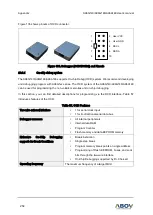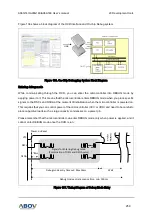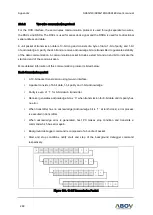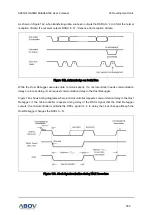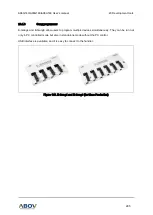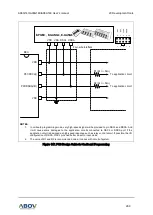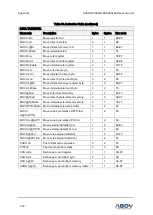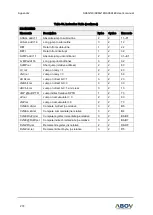
Appendix
A96G140/A96G148/A96A148 User’s manual
260
20.3.2
Two-wire communication protocol
For the OCD interface, the semi-duplex communication protocol is used through separate two wires,
the DSCL and DSDA. The DSCL is used for serial clock signal and the DSDA is used for bi-directional
serial address and data.
A unit packet of transmission data is 10-bit long and consists of a byte of data, 1-bit of parity, and 1-bit
of acknowledge. A parity check bit and a receive acknowledge bit are transmitted to guarantee stability
of the data communication. A communication packet includes a start bit and an end bit to indicate the
start and end of the communication.
More detailed information of this communication protocol is listed below:
Basic transmission packet
A 10-bit packet transmission using two-pin interface.
A packet consists of 8-bit data, 1-bit parity and 1-bit acknowledge.
Parity is even of
‘
1
’
for 8-bit data in transmitter.
Receiver generates acknowledge bit as
‘
0
’
when transmission for 8-bit data and its parity has
no error.
When transmitter has no acknowledge (Acknowledge bit is
‘
1
’
at tenth clock), error process
is executed in transmitter.
When acknowledge error is generated, host PC makes stop condition and transmits a
command which has error again.
Background debugger command is composed of a bundle of packet.
Start and stop conditions notify start and stop of the background debugger command
respectively.
Figure 138. 10-bit Transmission Packet













